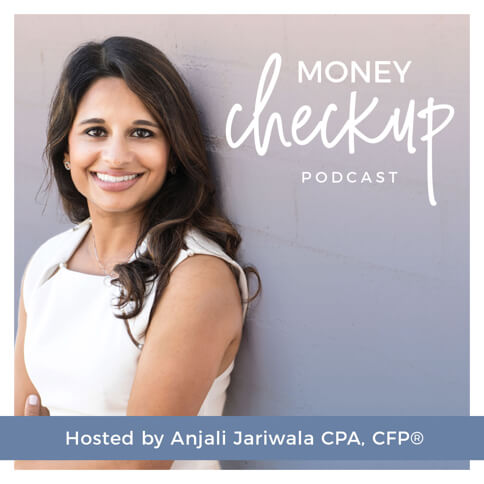Year End Tax Planning: Don’t Miss These Important Factors in 2019 and Every Year
As the end of the year approaches, it’s a great time to think about tax planning strategies, so that your new year gets off to a smooth start – and by the time tax season rolls around, you’re ahead of the game. Also, multiple changes to the tax law in 2018 means there are some key areas that you will want to pay close attention. Below are some simple, yet easy to miss techniques that you should consider, especially this year.
2019 Limitation Increases
In 2018, the IRS made a few different increases that you’ll want to know about for the 2019 tax year. Each are great news in terms of added savings opportunities. The first is a change to 401(k) limits. Employees can now contribute a total of $19,000 into their 401(k) plan, up from $18,500 in 2018. The catch up contribution for people age 50 and over remains the same, at $6,000. That means if you are 50 or older you can contribute $25,000 into your retirement plan. Keep in mind that you most likely set up an automatic contribution plan based on percentage of income or fixed dollar amount, so toward the end of the year, it’s good to revisit your elections to make sure you are set to hit the max for 2019. In addition to the 401(k) changes, IRA and Roth IRA contribution limits have increased as well – from $5,500 in 2018 to $6,000 in 2019. The catch up contribution has remained the same at $1,000 if you are 50 or older.
And the IRS didn’t just stop there. You might be going through open enrollment right now with your employer, or you may have an existing private high deductible health plan that includes a Health Savings Account (“HSA”). If so, be sure to note that starting with the 2019 tax year, the new limits for HSA’s are now $3,500 for an individual and $7,000 for a family. Similarly to the 401(k) change, you should review how your HSA contributions are set up and make adjustments if you would like to hit the max. Also, don’t forget that HSA limits are in total, meaning the limit is inclusive of both employer and employee contributions. For example, if your employer is putting $1,000 into your family HSA for 2019, then you are able to contribute $6,000 to reach the max of $7,000 for the year. One other helpful tip – if you were only allowed to adjust your contribution during your employer’s open enrollment period and you missed updating the amount, don’t worry – you can still make an after tax contribution into an HSA and receive a tax deduction on your tax return.
529 College Education Accounts (Hint: Not just for the college kid anymore)
You may be familiar with 529 accounts already, but if not, know that they are a tool that can be used to save for a child’s future education. The benefit of a 529 plan is that contributions grow tax free, and as long as funds are used for qualified education expenses, there are no tax implications when you pull the money out. The new tax law that went into effect in 2018 allows you to withdraw up to $10,000 per year from a 529 account for K-12 private school education. Certain states provide a state income tax benefit if you contribute to the state’s 529 plan. If you are sending your kids to private school, you may want to contribute the tuition into a 529 plan. Once in the account, you can remit the tuition payment back to the school through the 529. Either way, since you contributed to the plan, you can take advantage of the state income tax deduction. One item to note is that certain 529 plans may require you to keep funds in the account for a certain period of time before you can distribute it out. Just be sure to review the rules carefully to make sure this works for your unique situation.
Donor Advised Fund
A great tax benefit is being able to deduct (as an itemized deduction) charitable contributions. One technique is to “superfund” your charitable donations for a number of years while still receiving an immediate tax benefit. This can be accomplished through a donor advised fund (“DAF”). Here’s a bit more about exactly what is a DAF – it is essentially a pool of money that can be used to make donations to any 501(c)(3), and the big benefit is that you can make a large donation the DAF during the current year and receive a tax deduction that same year. Once the amount is in the DAF, you can take your time making charitable contributions, even over a number of years. The other benefit of a DAF is that you can donate appreciated stocks and mutual funds, instead of cash. If you have stock that has gone up significantly in value and are charitably inclined, you can donate that stock into a donor advised fund. If you donate the stock to a DAF, you receive a tax deduction for the fair market value on date of contribution and can avoid capital gains tax, which you would pay if if you sold the stock instead. The only item to note is that you may be limited on your charitable donations and itemized deductions so it is important to consult with your tax advisor to ensure you receive the full benefit especially in lieu of the new tax law.
Are you sufficiently paid in?
And the changes keep coming… The new tax law that went into effect in 2018 also adjusted the withholding tables. So what does this mean for you? It means that most employers are withholding less this year than they were in previous years due to the changes in the tax rates. So this is an important watch-out, because for many people, the lower withholding may result in taxes due at tax filing time. Therefore, it’s definitely a good idea to do a paycheck check up to see if you may owe tax. If so, consider adjusting your withholding for 2019. Some scenarios where the adjustments to withholding may not be enough include:
- Dual income households or someone with multiple jobs
- Have high income or complex tax return
- Those who claim the child tax credit
- Itemized deductions in previous years
- Owed money last year
If you do need to adjust your withholding, you can do so by submitting a new W-4 form to your employer.




